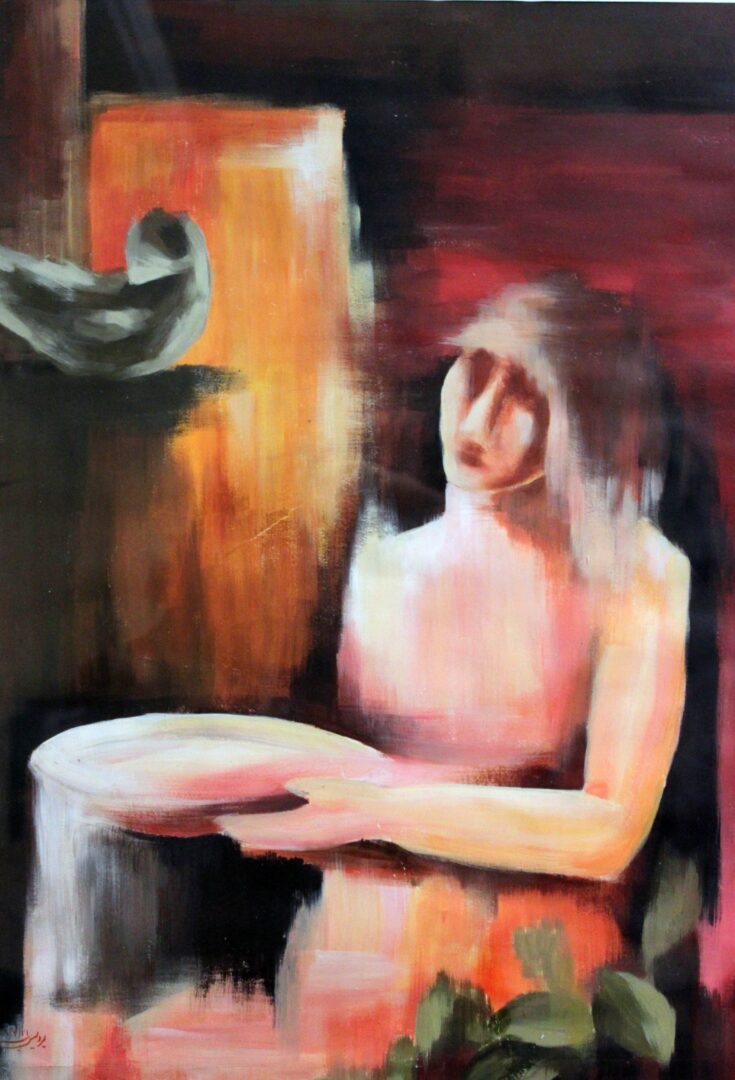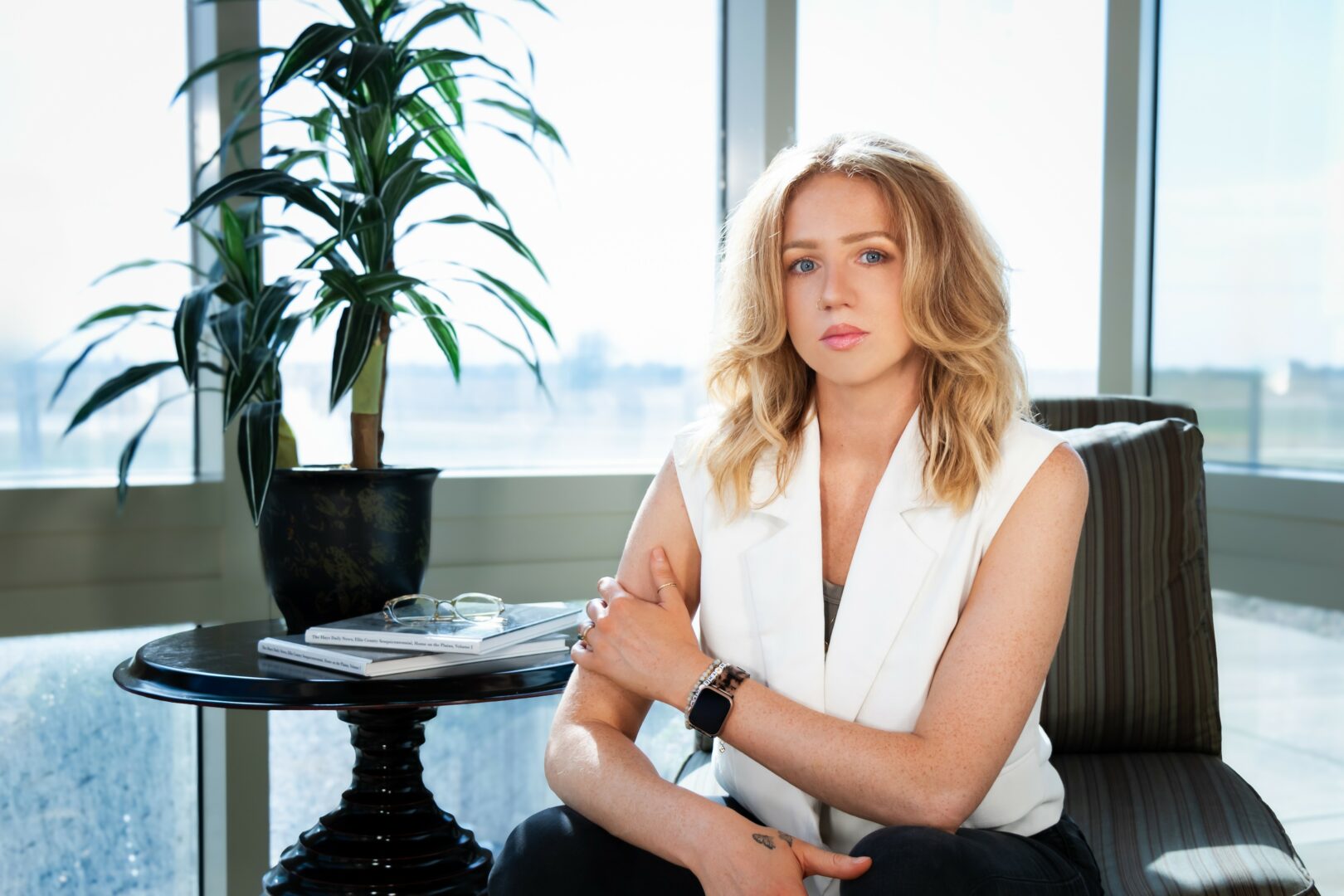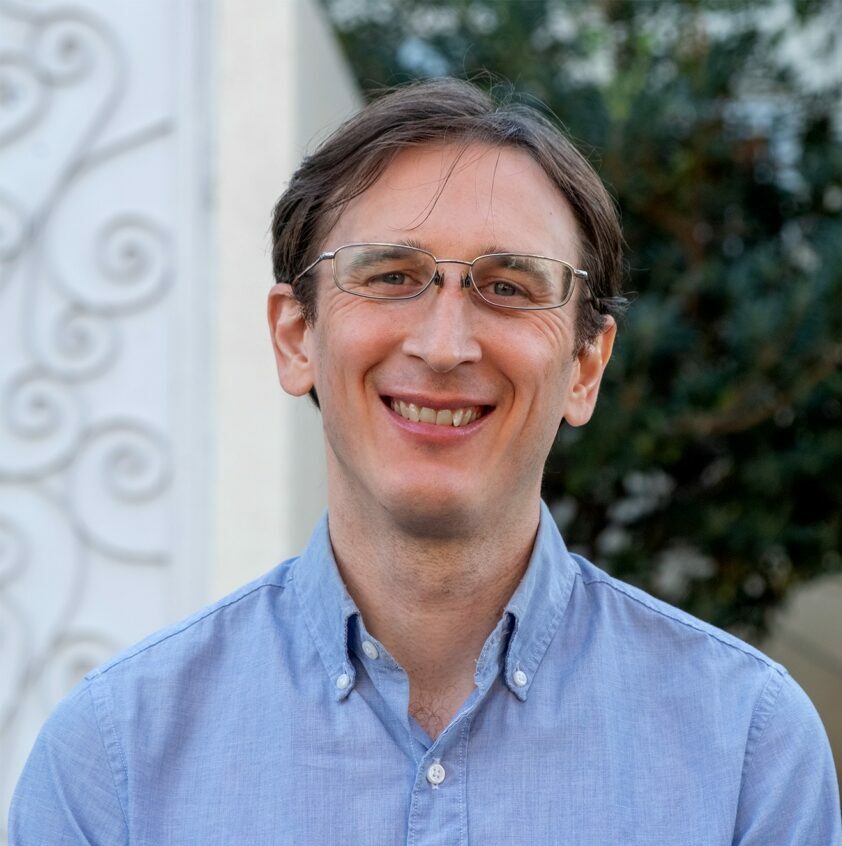We recently connected with Pardis Bakhtiari and have shared our conversation below.
Pardis, appreciate you making time for us and sharing your wisdom with the community. So many of us go through similar pain points throughout our journeys and so hearing about how others overcame obstacles can be helpful. One of those struggles is keeping creativity alive despite all the stresses, challenges and problems we might be dealing with. How do you keep your creativity alive?
I keep my creativity alive by intentionally staying curious and open to new perspectives. Growing up in Iran and working across journalism, art, and museum education, I learned that creativity isn’t just about making art—it’s about observing, questioning, and connecting ideas in unexpected ways. I feed my creativity by engaging with different media, exploring cultural practices, and reflecting on social and material contexts, especially around identity and gender. I also make it a practice to experiment in my own art, collaborate with others, and remain playful in how I approach problems. For me, creativity is sustained through continuous learning, reflection, and the courage to take risks.

Let’s take a small detour – maybe you can share a bit about yourself before we dive back into some of the other questions we had for you?
I’m Pardis Bakhtiari, a visual artist, educator, and researcher originally from Tehran, Iran, now based in the Bay Area. My journey with art began in childhood, when painting became my first language—a way to understand the world, express emotions, and challenge boundaries that words could not capture.
Over the past decade, I’ve taught art across universities, museums, and community programs, focusing on inclusivity, collaboration, and accessibility. In my classroom and workshops, I strive to create spaces where people of all backgrounds can explore, experiment, and find their own creative voices. I believe that art is not only a practice of making but a practice of thinking, connecting, and imagining new possibilities.
My research examines how art can challenge dominant narratives about the body, identity, and space. Grounded in new materialism and posthumanist thought, I explore how creativity functions as embodied knowledge—how the body, materials, and environment co-create meaning in ways that go beyond traditional representation. This inquiry informs my studio practice, curatorial work, and teaching, and has been shared through exhibitions, publications, and academic presentations.
What excites me most about my work is its potential to foster dialogue, inclusion, and transformation. I am currently expanding my practice through new exhibitions, collaborative programs, and public projects that invite audiences to engage with art in participatory and relational ways. My goal is to use creativity not only to express, but to connect, challenge, and imagine a more equitable and empathetic world.
The path hasn’t always been easy—relocating from Iran and navigating complex cultural and academic systems demanded resilience, adaptability, and courage. These experiences have strengthened my confidence and shaped my commitment to building environments where others, especially those negotiating challenges of identity or migration, can feel seen and empowered.
For me, creativity, research, and teaching are inseparable. Each informs the other: my art shapes my pedagogy, my scholarship shapes my exhibitions, and my teaching informs how I think about both. Looking forward, I aim to continue bridging disciplines, fostering community engagement, and exploring how art can open new ways of understanding ourselves, each other, and the world around us.
There is so much advice out there about all the different skills and qualities folks need to develop in order to succeed in today’s highly competitive environment and often it can feel overwhelming. So, if we had to break it down to just the three that matter most, which three skills or qualities would you focus on?
Looking back, three qualities have been most impactful in my journey: resilience, interdisciplinary curiosity, and cultural adaptability.
Resilience has been foundational. Moving from Iran to the U.S., pursuing a Ph.D. in a second language, and navigating unfamiliar academic and professional systems required constant adaptability, reflection, and persistence. I learned that setbacks aren’t failures—they’re opportunities to learn, grow, and strengthen your resolve.
Interdisciplinary curiosity has allowed me to bridge studio art, theory, museum studies, and pedagogy. Being open to multiple fields has expanded how I think, create, and engage with others, and it has shaped my ability to approach problems from different perspectives.
Cultural adaptability has been essential for navigating diverse environments—from Iranian and American institutions to community-based programs and museums. It’s taught me how to listen deeply, collaborate meaningfully, and create work that resonates across different contexts.
Advice for those early in their journey:
Embrace challenges—they build resilience faster than comfort ever will.
Stay curious beyond your discipline—seek knowledge in areas that intersect with your work; it will give you a richer perspective and make your work stand out.
Develop cultural and social awareness—learn to adapt, listen, and engage with people and ideas different from your own.
Above all, remember that growth is iterative. Invest in yourself, remain reflective, and approach each experience as both a learning opportunity and a chance to practice showing up fully in your work.
Is there a particular challenge you are currently facing?
One of the biggest challenges I’m facing right now is finding enough time and space to fully explore my creative ideas while also meeting professional and personal responsibilities. It’s easy to get pulled in many directions, and sometimes the work I want to do most can feel delayed or compromised.
To address this, I’ve been creating intentional structures for myself—blocking time specifically for studio work, research, and reflection, and being disciplined about protecting those moments. I also practice saying no to tasks that don’t align with my priorities, and I lean on collaboration when possible. These strategies help me maintain focus and energy, and allow my work—both creative and professional—to move forward even amidst competing demands.
Contact Info:
- Website: https://pardisbakhtiarii.wixsite.com/pardisbakhtiari
- Instagram: pardisartt
- Linkedin: https://www.linkedin.com/in/pardis-bakhtiari-114a3358/
Image Credits
Pardis Bakhtiari
so if you or someone you know deserves recognition please let us know here.




